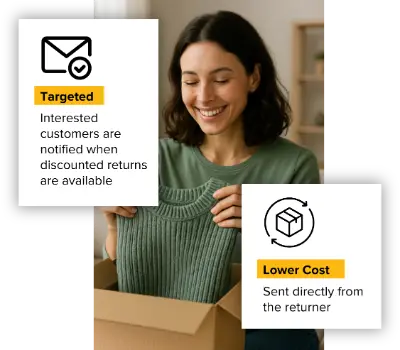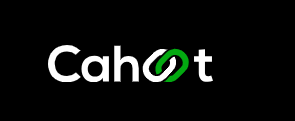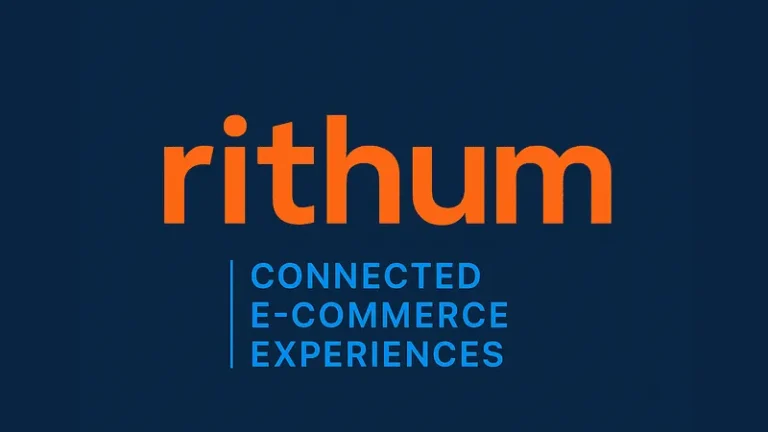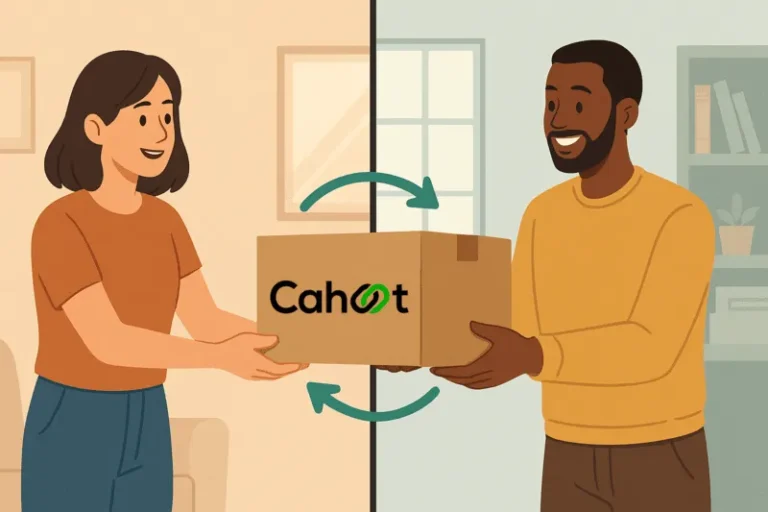Buy with Prime Extends FBA to DTC Ecommerce

Last updated on May 27, 2022

In this article
 8 minutes
8 minutes
This past Thursday, April 21st, Amazon launched a new service: Buy with Prime. For a fee, the service will let third-party ecommerce merchants use Amazon’s huge distribution network to fulfill orders on their own sites. It’s Amazon fulfillment for DTC sites.
On top of that, Buy with Prime web sites will be allowed to put the Prime badge on their websites next to items eligible for free 2-day and 3-day shipping (which will be most items), helping boost their conversion.
And finally, Amazon Prime members that purchase from third party sites that use Buy with Prime will have their payment and shipping information pre-loaded in the checkout window, further smoothing the conversion process and decreasing cart abandonment.
In this article, we’ll share what we know so far about the service and dive into pros, cons, and fulfillment service alternatives for sellers.
Who Benefits from Buy with Prime?
Amazon is targeting Buy with Prime firmly at online sellers with DTC stores. While Amazon previously offered its multi-channel fulfillment service to DTC sellers, this new offer seems in many ways to be a direct replacement, and we anticipate that they’ll slowly phase out Amazon MCF in favor of Buy with Prime.
While Buy with Prime is currently invite-only, Amazon’s new website for the program clearly demonstrates who they think will benefit most from using it. As you can see in the below screenshot, they’re positioning it as a way that DTC sellers can grow their business.
Buy with Prime asserts: if you’re a DTC seller, you can stop worrying about fulfillment and delight customers with fast and free shipping by signing up with us.
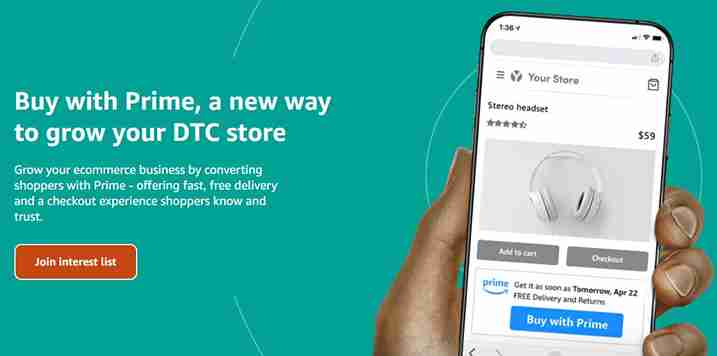
It stands to reason that this will become and remain Amazon’s fulfillment solution for direct-to-consumer online sellers, but that it likely won’t grow further. It would be remarkable if other marketplaces like Walmart or Target integrated with Buy with Prime (at least for the time being), and we’ll be very interested to see whether a critical mass of Shopify or BigCommerce sellers jump over to Amazon’s new service.
Shopify fulfillment network recently significantly drew back its ambitions, but in its place, Shopify has quickly pivoted to talks to buy a rival fulfillment service. If Shopify makes such a large investment in a fulfillment network of its own, it likely will want to shut Amazon out of its user base in favor of its own solution. As it stands, it’s an open question as to whether Shopify sellers will be able to use Buy with Prime.
We’ll keep a close eye as the situation develops, because multi-channel sellers know how painful it can be to have to manage multiple fulfillment solutions. Amazon is making a big play to extend FBA across more of the ecommerce landscape, but its competition isn’t standing still.
Slash Your Fulfillment Costs by Up to 30%
Cut shipping expenses by 30% and boost profit with Cahoot's AI-optimized fulfillment services and modern tech —no overheads and no humans required!
I'm Interested in Saving Time and MoneyWhat Are the Drawbacks?
Buy with Prime promises to solve checkout and fulfillment for DTC merchants, but convenience will come at a price. Sellers trying to make it on their own or pursuing a multichannel ecommerce strategy enjoy significant benefits from their strategic distance from the big marketplaces, and implementing Buy with Prime will blur those lines and risk losing more than you gain.
Amazon Owns Your Customer
If Amazon gets their logo on your checkout process, and the customer converts because they feel more comfortable with Amazon, who really owns the customer? Or worse, will the customer even stay on your site?
Many DTC sellers have built brands and struck out on their own because they want to get away from Amazon and its questionable business practices. By owning their customer, they build long-term relationships that lead to repeat purchases and realize significant long-term customer value, the basis of sustainable profitability.
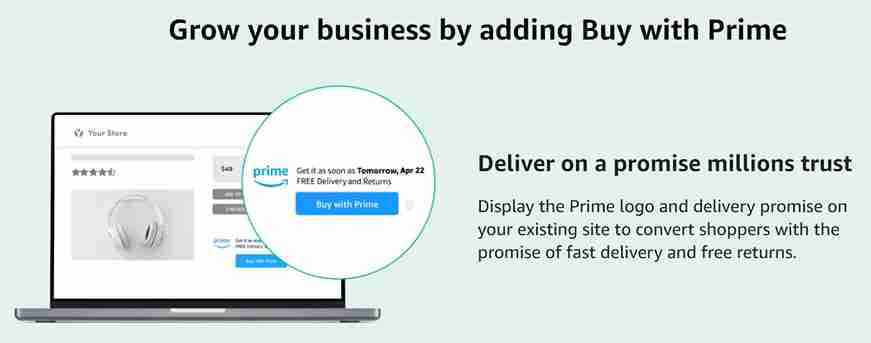
Source: buywithprime.amazon.com, 4/26/22
By bringing Amazon back into the mix, DTC sellers risk all of their hard work in developing a unique relationship with their customers. Fast and free shipping does boost conversion, so you may see a boost from new customers – but with Amazon’s logo doing the heavy lifting, you’re also giving customers the idea to head over to Amazon to price check and look at competitive offers.
Well over half of online product searches already start on Amazon. Do you really want to give shoppers the idea to pop over to the ecommerce giant after you’ve done all the hard work advertising to get them onto your site?
Pay Hefty Amazon Fees
In Q4 2021, Amazon made $30.3 billion from third-party seller services, which includes commissions, fulfillment, and shipping fees. While we don’t yet know the full fee structure of Buy with Prime, all indicators point to the company trying to turn this into the next Amazon Web Services. After all, in recent years Amazon has continued to lose money on its core retail business, while it makes up for it with huge profits from AWS and its advertising business.
AWS famously started as an internal service to run Amazon’s business before they productized it and started selling it to the world at large. Amazon FBA is now following the same exact path: it started as a way for Amazon to fulfill their own orders, then they extended it to third-party sellers, and now they’re expanding to DTC merchants. We anticipate that they’re targeting significant margins with this new business – perhaps they could even rival AWS’ 60%+ operating margin.
With this model, DTC merchants will feel the crunch in their own profitability. In exchange for increased conversion thanks to the Amazon Prime badge, they’ll realize lower margins. If the extra revenue doesn’t flow through to the bottom line, is the service worth it?
Looking for a New 3PL? Start with this Free RFP Template
Cut weeks off your selection process. Avoid pitfalls. Get the only 3PL RFP checklist built for ecommerce brands, absolutely free.
Get My Free 3PL RFPCompetes with Your FBA Inventory Limits
Finally, if you’re a multichannel seller trying to win on Amazon and on a DTC site, you don’t get two separate inventory limits. All of your FBA and Buy with Prime inventory goes into one pool, and where an order is placed doesn’t make a difference.
While this is helpful in its simplicity, it’s a big potential challenge because Amazon is notorious for imposing too-strict FBA inventory limits and for long receiving delays. With all of your eggs in the FBA basket, you make yourself extremely vulnerable to a self-serving change in inventory limits or one of FBA’s routine weeks or months-long receiving delays.

The best fulfillment practice for Amazon-only sellers is to have an FBA alternative for the many times when FBA falls flat, and that will be doubly true for Buy with Prime users. If you’re selling on Amazon and on a DTC site, and a receiving delay knocks your best seller out of stock, that now doesn’t just kill your Amazon sales rank – it also kills your DTC store’s SEO and paid advertising efforts!
Though Amazon is positioning Buy with Prime as a holistic solution for DTC sellers, we assert that relying wholly on Amazon FBA would be a fatal mistake for your business.
The Buy with Amazon Prime Alternative: Cahoot
Cahoot has created a robust
If Buy with Prime’s promise of a simple multi-channel answer to fulfillment appeals to you, contact us in addition to sending in your application to Amazon.
Cahoot is the next generation of tech-enabled fulfillment networks. Unlike other networks that are collections of 3PLs, Cahoot’s innovative approach empowers merchants across the country to fulfill orders for one another. Our peer-to-peer network is a collective of highly vetted eCommerce retailers who offer up excess warehouse space and resources to provide high-quality order fulfillment to other merchants. Since they fulfill their own DTC orders, they know how important top-notch fulfillment is, and they put the same care and energy into your orders as they do for their own.
As a result, costs are typically lower than what you get with a traditional 3PL fulfillment company, yet service levels are higher. With a P2P network, multi-channel fulfillment with nationwide 1-day and 2-day delivery at economy shipping rates is the norm. Merchants can use the network solely for outsourced fulfillment – similar to FBA, or they can choose to fulfill orders for other merchants and offset some of their own outsourced fulfillment costs.
Turn Returns Into New Revenue
